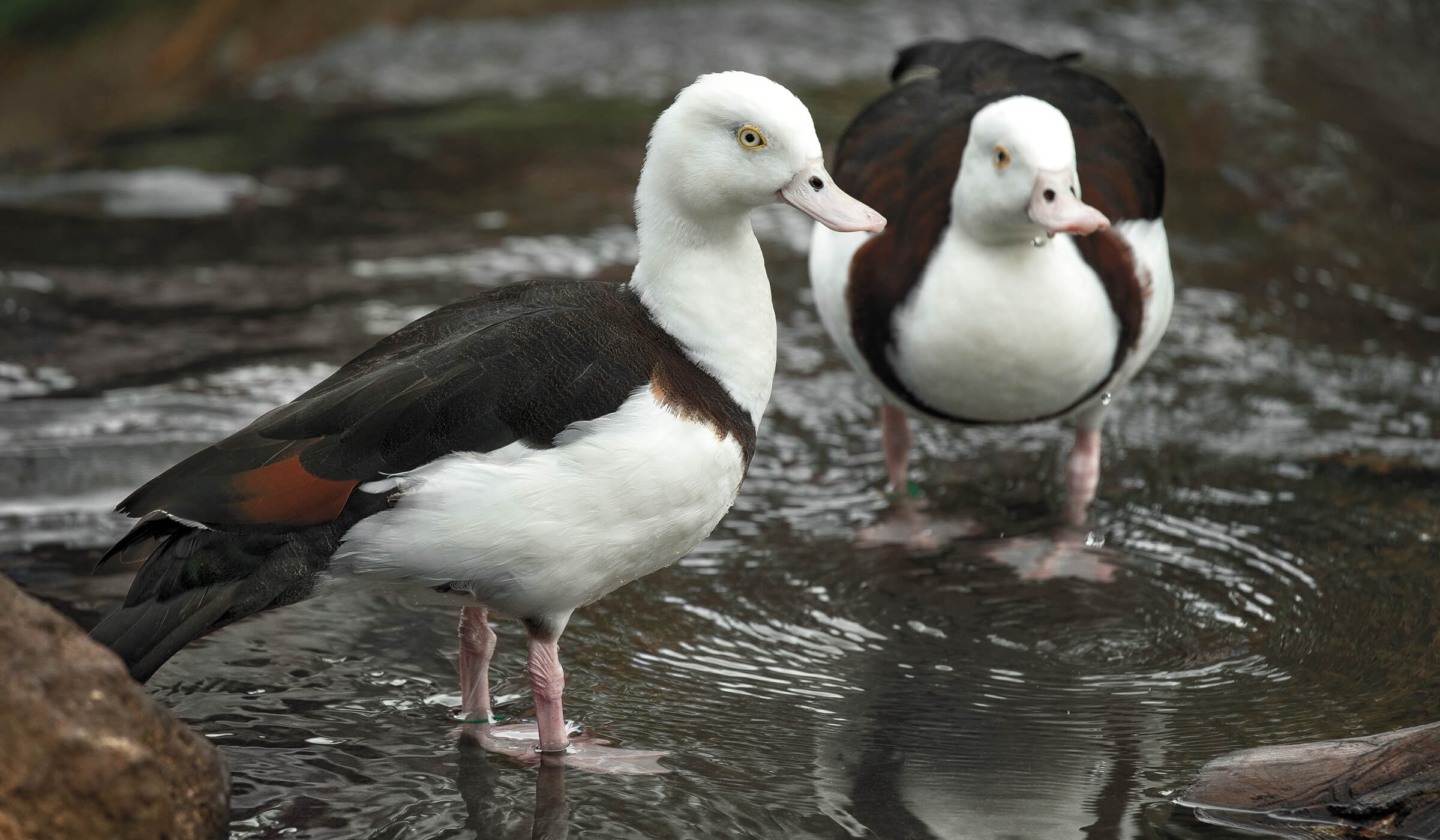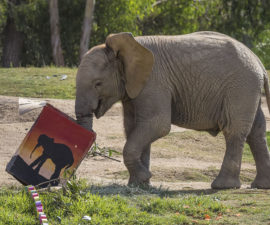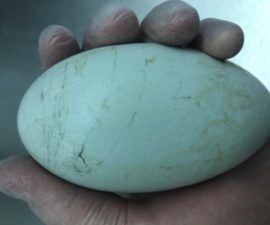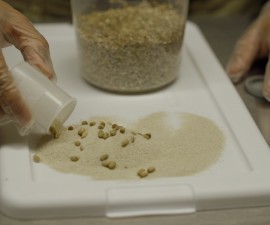BY Peggy Scott
Photography by Ken Bohn
When contemplating amazing animals from Down Under, it’s important to think outside the pouch. Because for all the cute and charismatic marsupials that call Australia home, there are some equally amazing avian wonders that are birds of a feather in the Land of Oz. Without the birds, notes Andrew Stehly, associate curator of birds at the Safari Park, the Park’s new Walkabout Australia exhibit would be telling only half of the continent’s story. “As part of the ecological system, birds play important roles in their environment, such as seed dispersers,” he explains. “And the birds at Walkabout Australia represent some of the various regions of Australia really well.”
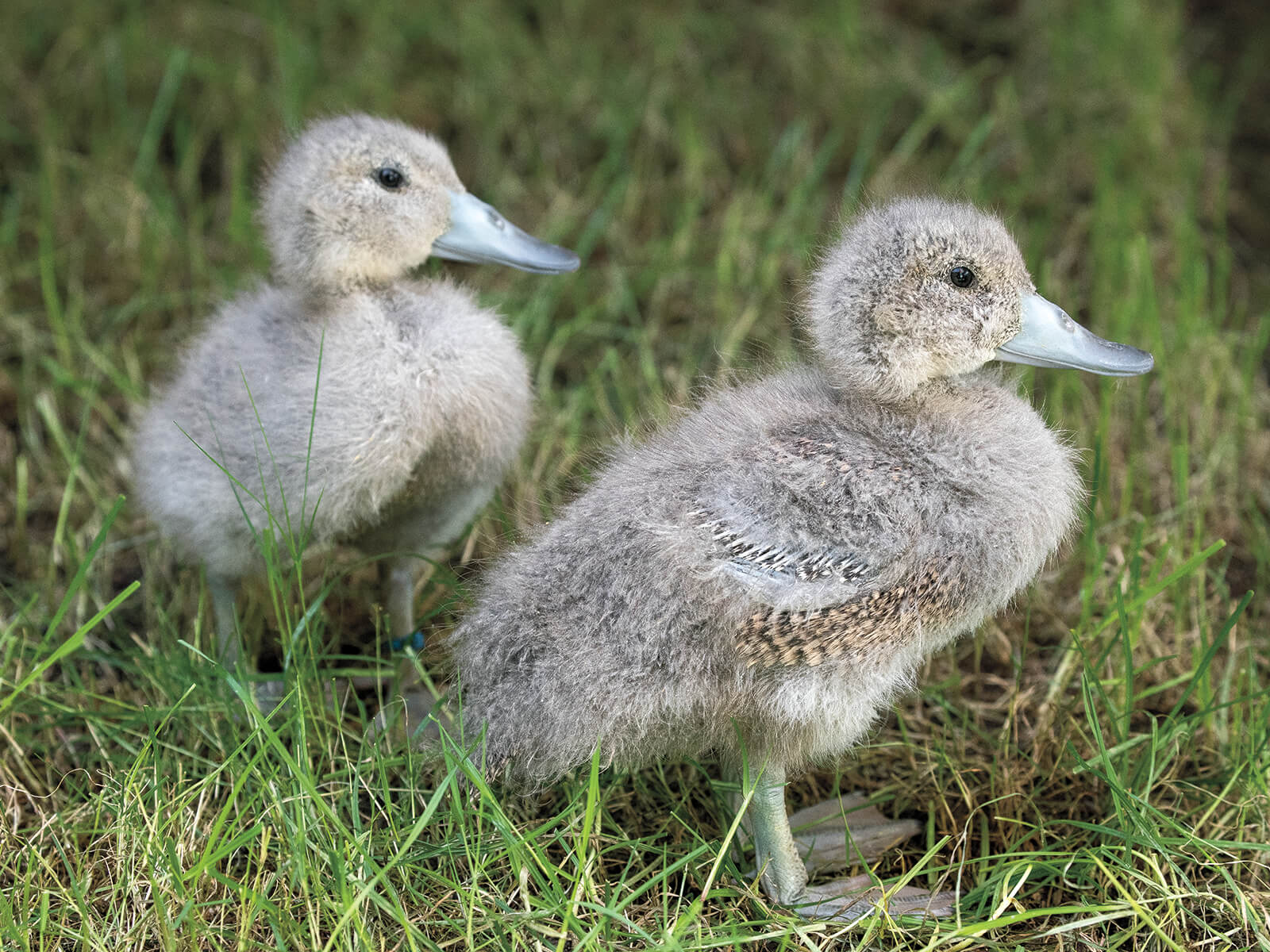
A DUCK BY ANY OTHER NAME…
Whether you call them canvasback, oatmeal, diamantina, or (as we do) freckled, these ducks are eye-catching birds who know their way around a pond.
“Spot” the Newcomer
Not only does the opening of Walkabout Australia bring with it the debut of freckled ducks Stictonetta naevosa in the Park’s bird collection, it also marks our first hatching of that species. Even though it can be called by several names—the canvasback duck, oatmeal duck, speckled duck, and diamantina duck—this web-footed paddler can be identified by the freckles that mottle its plumage, as well as by its large head with a jaunty peak at the back, and a distinctive narrow and slightly upturned bill.
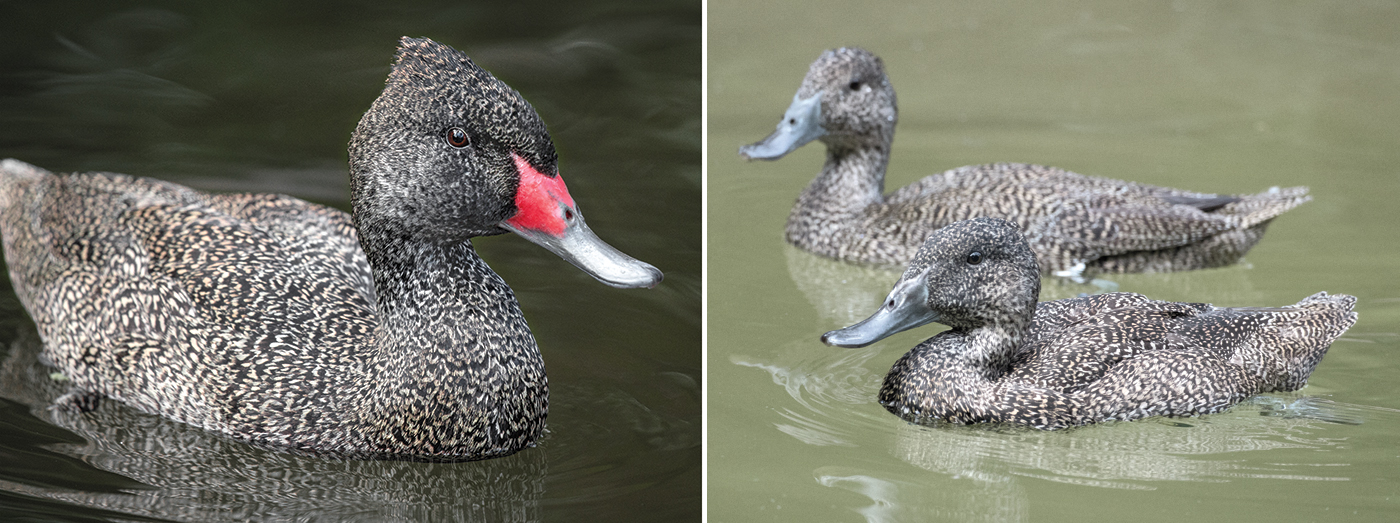
SEEING RED
The dominant male (left) sports a crimson bill, unlike the females ( right)
At the Safari Park, check for freckled ducks in or near the pond below Walkabout Australia’s Zuest Station. The leader of the foursome is easy to “spot”—you’ll see red. “Our dominant male has the crimson bill,” Andrew says. “The other male and the females don’t.”
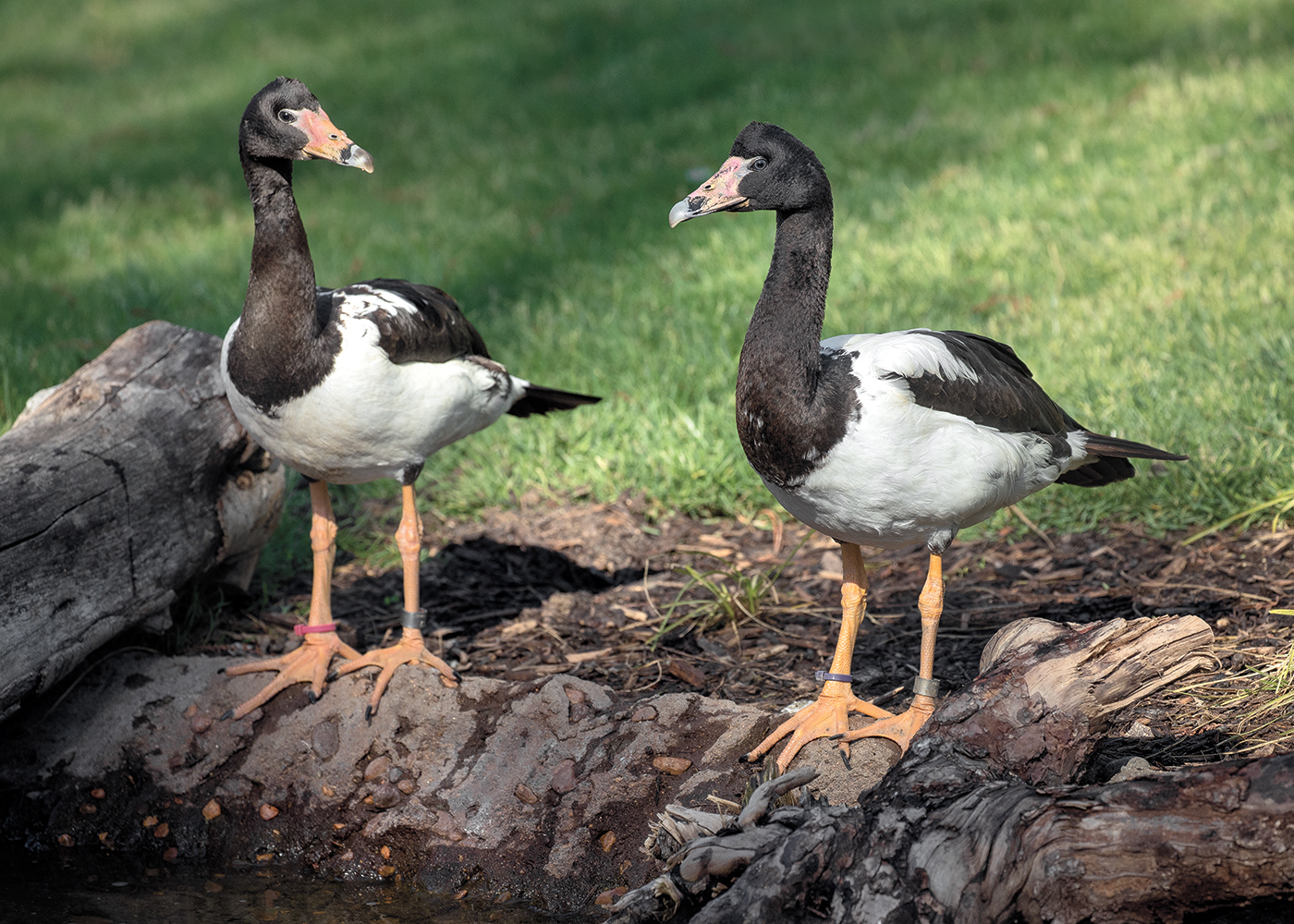
HOBNOBBING WITH THE FEATHERED AND FAMOUS
From the top of their knobbed heads to the bottom of their partially webbed feet, magpie geese are regal birds and the last known species in their family.
Look, and Listen
When trying to identify the magpie goose Anseranas semipalmata, first look up—the black head of a magpie goose is topped with a noticeable knob, and its face is covered with naked, red skin. Then, look down—unlike most waterfowl, magpie geese have only partially webbed feet, which is what semipalmata means. The last known species in the family Anseranatidae, magpie geese do not lose (molt) their flight feathers all at once, so they are never left flightless.
A flock of magpie geese lives in Walkabout Australia’s walk-through area, where they like to relax and forage near the pond. Andrew notes that visitors might hear them before they catch sight of the birds. “They make this really cool, distinctive honking noise,” he says, but is quick to add they are something to see, too. “I love to see their black-and-white plumage against the background of the green grasses and trees. They stand out really well.”
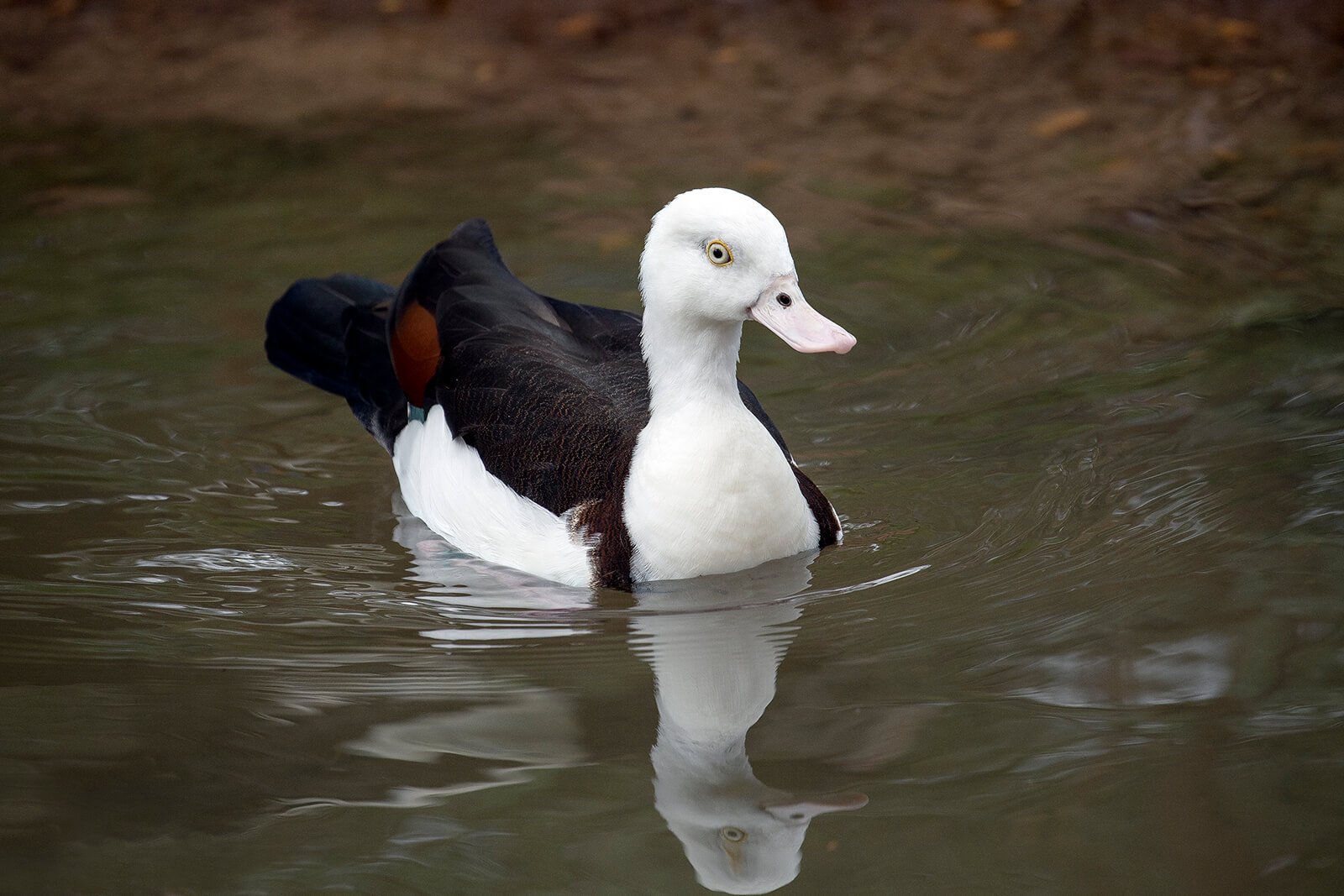
FLEET OF FOOT—AND WING
Not only are radjah shelducks skillful swimmers, they can take to the skies with the best of their bird brethren, as well as cover a lot of ground—quickly—on foot.
Eye-catcHing and Colorful
Native Australians might refer to the radjah shelduck Radjah radjah as a Burdekin duck, named for the Burdekin River in Queensland. Some people substitute the word “sheldrake” for shelduck (both words mean “pied or dappled waterfowl”). But whatever you call it, this bird is a colorful character. You can identify it by its pale pink bill and feet; white and dark chestnut markings; and the distinctive white iris of its attention-getting eyes. In flight, it shows the green bands of its chestnut-colored wing tops. These web-footed birds are strong swimmers that can make their way quickly across a body of water. And while they are skilled fliers, they do just as well on foot. Andrew says they are “great runners and always on the move and patrolling” the areas of Walkabout Australia that they share with the magpie geese.
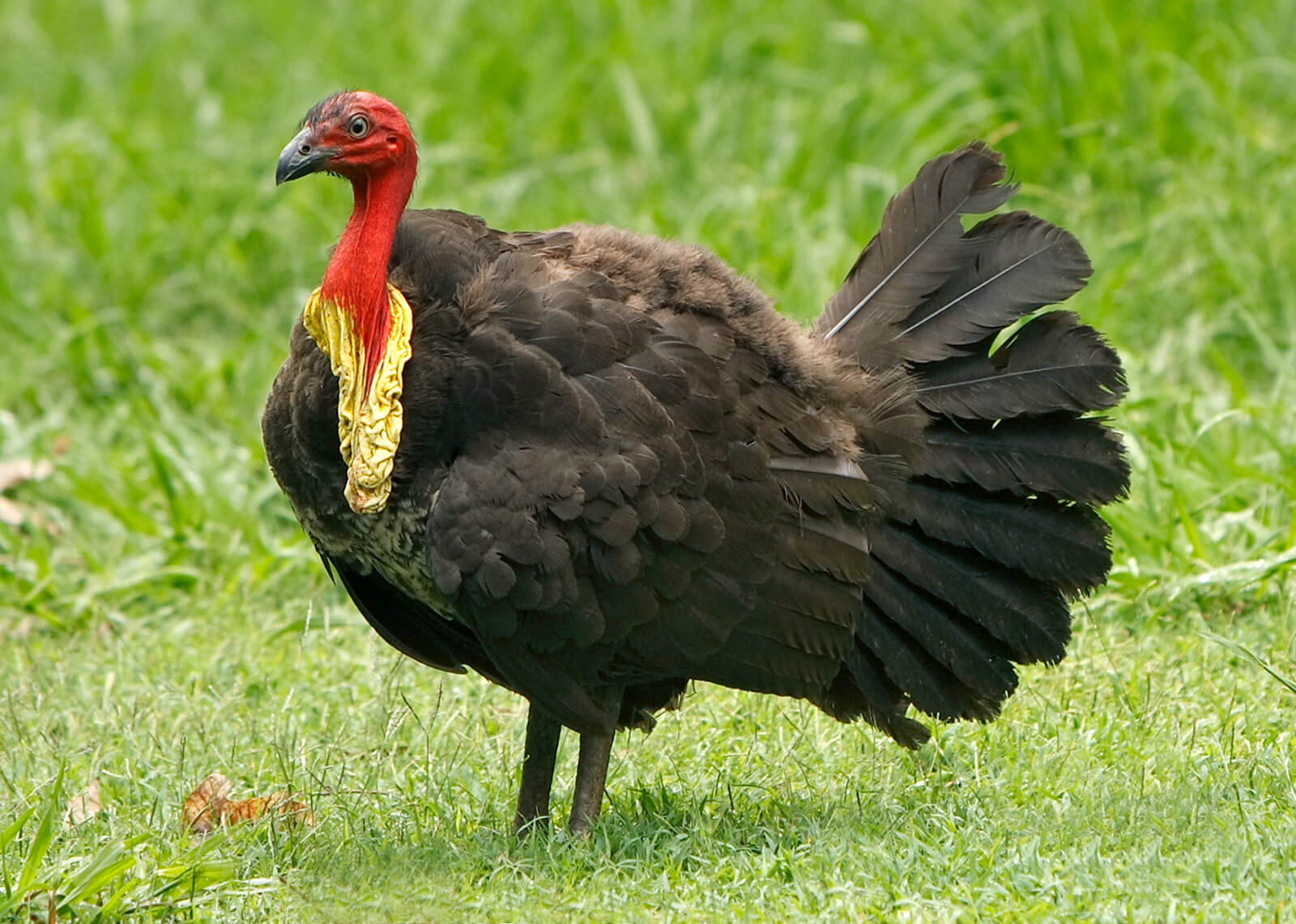
SHOWING HIS TRUE COLORS
Not only is the Australian brush-turkey hard to miss for his colorful plumage, he is also a master craftsman (or bird) when it comes to building an egg mound. – Ku-ring-gai Chase National Park, New South Wales, Australia (Photo by:CraigRJD/iStock/Getty Images)
If He Builds It…
With his striking looks, it would seem the male Australian brush-turkey Alectura lathami would have no trouble attracting the ladies. But for this species, the guys really have to do their homework—or, more accurately, nest work. A male Australian brush turkey builds an egg mound by gathering earth, leaves, and other ground material together with his powerful legs and wide feet. A mound can be as big as 3 feet tall and 13 to 16 feet in diameter. That’s a pretty big home improvement project for a bird that only weighs about five pounds.
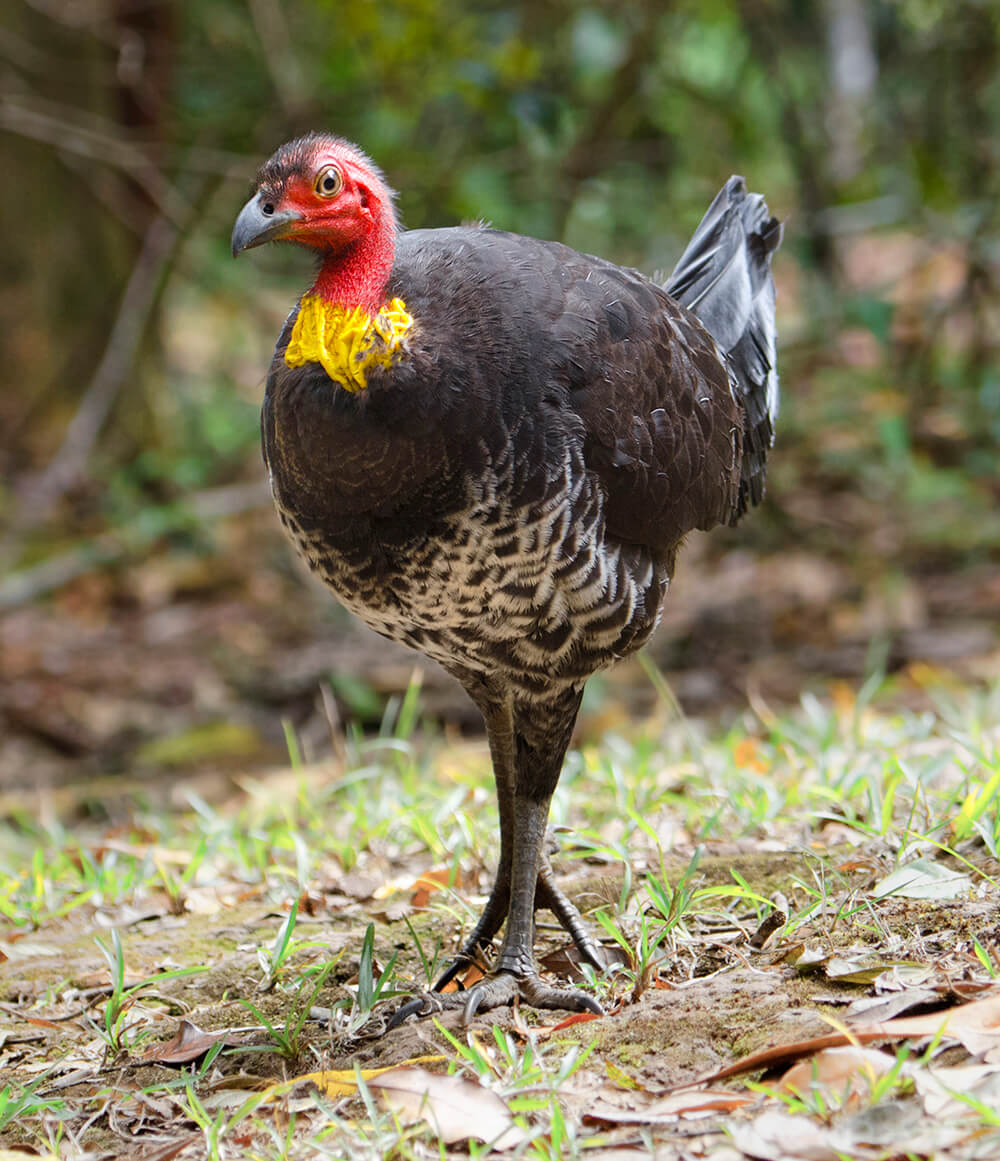
FANCY FOOTWORK
The Australian brush-turkey’s strong legs and wide feet are perfect tools for gathering materials to build an egg mound. Tableland, Queensland, Australia (Photo by: BirdImages/iStock/Getty Images)
Females choose males based at least partly on the quality of the mound, often visiting numerous mounds before selecting one. The male spends many hours each day building and maintaining his mound until it’s just right—the right temperature, that is. “Because the eggs are incubated by temperature, the male uses his beak to test the mound,” Andrew explains. “If it’s not right, he will add or take away material until it’s right.” If a mound is particularly attractive, more than one female will lay her dozen or so eggs in the same mound! However, while the females might be suitably impressed, people who live in Australia are not—the brush turkeys are notorious for digging up gardens and making an unwelcome mess.
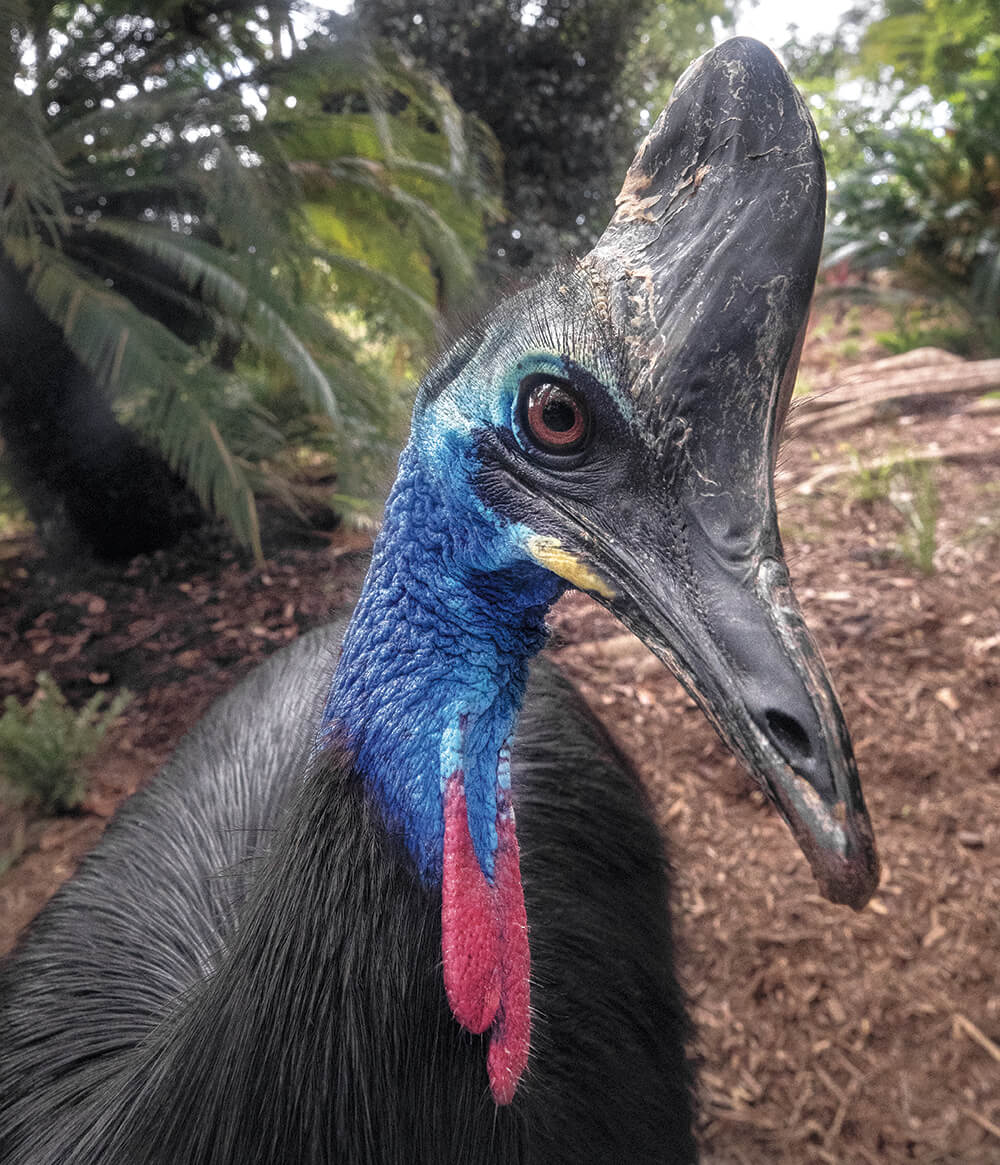
CALL HIM AMAZING
Not only is the cassowary’s helmet-like casque a sight to behold, it also helps the bird be heard by amplifying its booming call.
Dinosaur Bird?
While all birds are descended from dinosaurs, the cassowary Casuarius casuarius seems even more reminiscent of the ancient reptiles than other bird species do. Large bodied with fierce claws, these flightless birds also have a casque, a helmet-like structure atop the head, which is thought to amplify the bird’s booming call. “You feel their call more than you hear it,” Andrew says of the southern or wattled cassowaries at the Park. “The males use it to warn other cassowaries away from their territory or to attract females.”
The cassowary habitat is one of Andrew’s favorite parts of Walkabout Australia. “Their exhibit is set up and planted well,” he says. “They move around, always on the lookout for intruders or fallen fruit. I love that it’s so natural—it takes a couple of minutes to find them, but when you do, it’s very rewarding.”

